Himalayan Lake Roopkund is a cemetery of 500 people, which keeps its secret
Categories: Asia | History | World
By Pictolic https://pictolic.com/article/himalayan-lake-roopkund-is-a-cemetery-of-500-people-which-keeps-its-secret.htmlPeople have been talking about the existence of a mysterious Skeleton Lake in the Himalayas for hundreds of years. The shores of this reservoir, located high in the mountains, are dotted with the remains of unknown people who were killed by an angry deity. But since no one had seen this creepy place with their own eyes, the stories about it were perceived as part of local folklore. This was the case until 1942, when a lake called Roopkund was discovered at an altitude of more than 5 thousand meters.
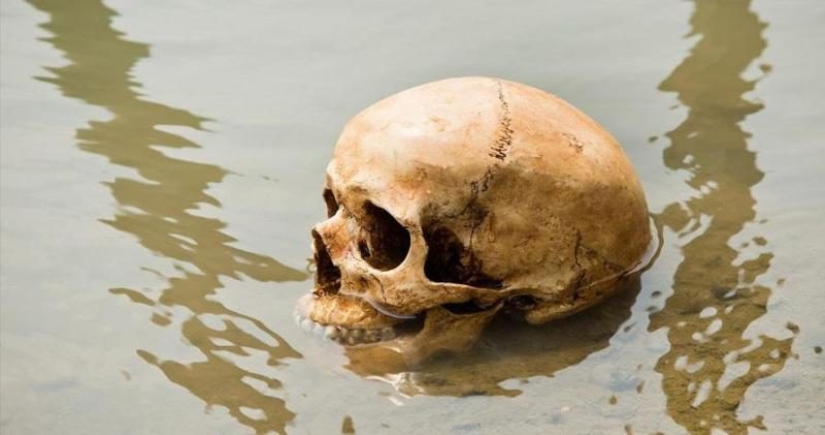
On the rocky shores and the bottom of a relatively small reservoir, the expedition found the remains of 500 people. A preliminary examination of the bones showed that all these people died at the same time, as a result of one event, and a very long time ago. How did a crowd of unknown people end up at an altitude of 5 thousand meters, which is not easy to reach even for modern climbers? What killed them?
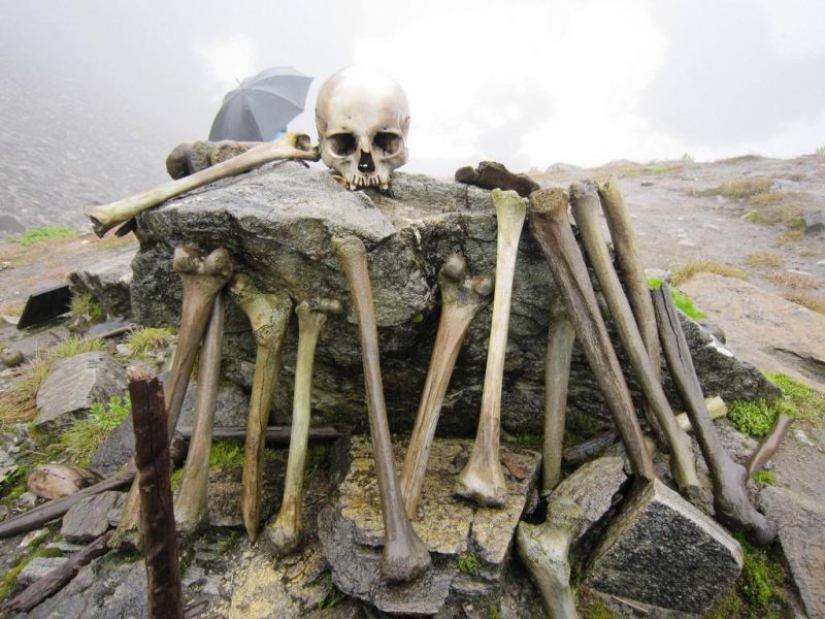
This mystery, because of its age, is more complicated than the story of the death of the Dyatlov tourist group in the Northern Urals. Nevertheless, the circumstances of this catastrophic case have been established, as well as the cause of death of people. But scientists can't explain many things yet. But let's start in order.
Nanda Devi National Park is a beautiful place in the north of India, belonging to the western part of the Himalayas. There are dense forests, alpine meadows and majestic glaciers that have been preserved intact and look like thousands of years ago. Here you can meet a black bear and a snow leopard, but a person is very rare.
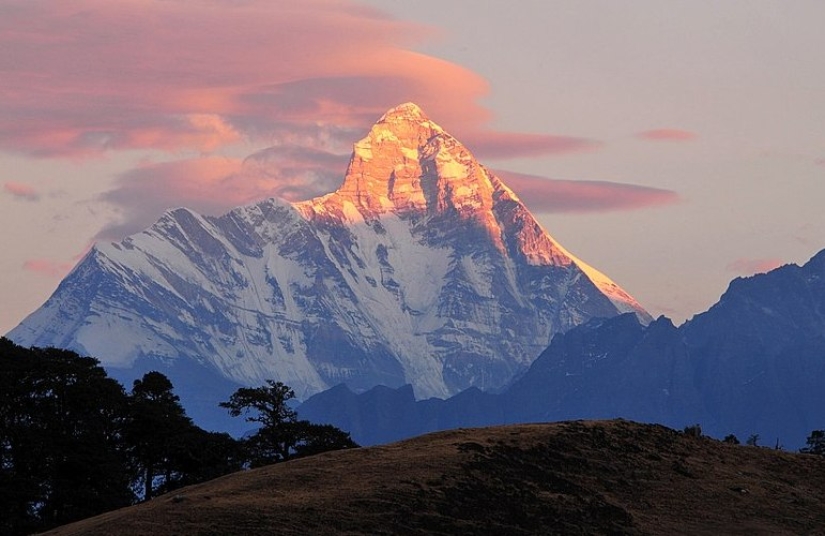
The foothills of Nanda Devi Peak (7817 m) owe their pristine appearance to the fact that the area has no permanent population and is very inaccessible. Here you can meet only park rangers who keep order and conduct scientific observations. One of such employees, Hari Kishan Madwal, discovered the Skeleton Lake while making a detour of remote places of the reserve in 1942.
The lake was located in a depression on the slope of the seven-thousandth Trisul mountain, located next to Nanda Devi. The reservoir was very small, and its depth did not exceed 2 meters. How did it happen that the caretaker, who is obliged to know the entrusted territory like the back of his hand, has never been to the lake before?
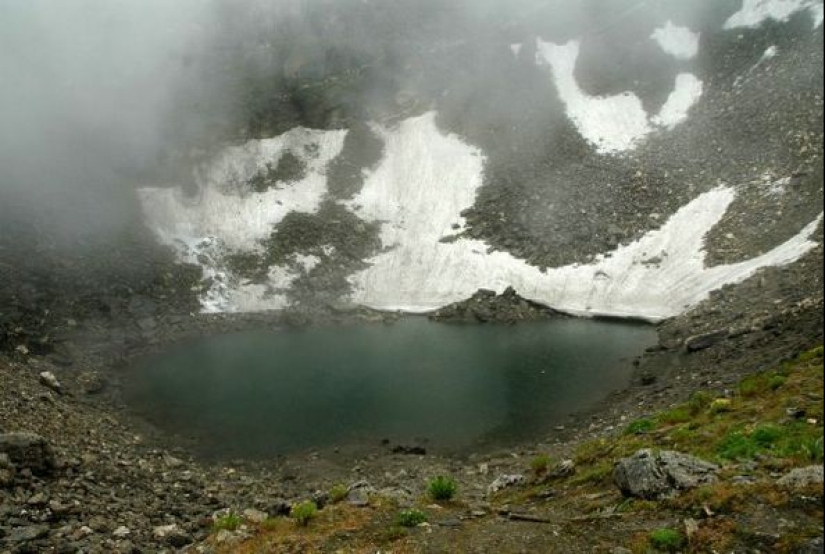
The fact is that due to its high location, Lake Roopkund is accessible to visitors only one month a year, when the passes are freed from snow, and the water mirror itself from thick ice. So without setting a goal to visit here, you can only get to the lake by a big chance.
Madval was not impressed by the find, as he knew perfectly well the local legend about the lake littered with bones. It is likely that the few inhabitants of the valley located below the reserve once wandered to a height of 5020 meters for some purpose and saw the lake and human bones.
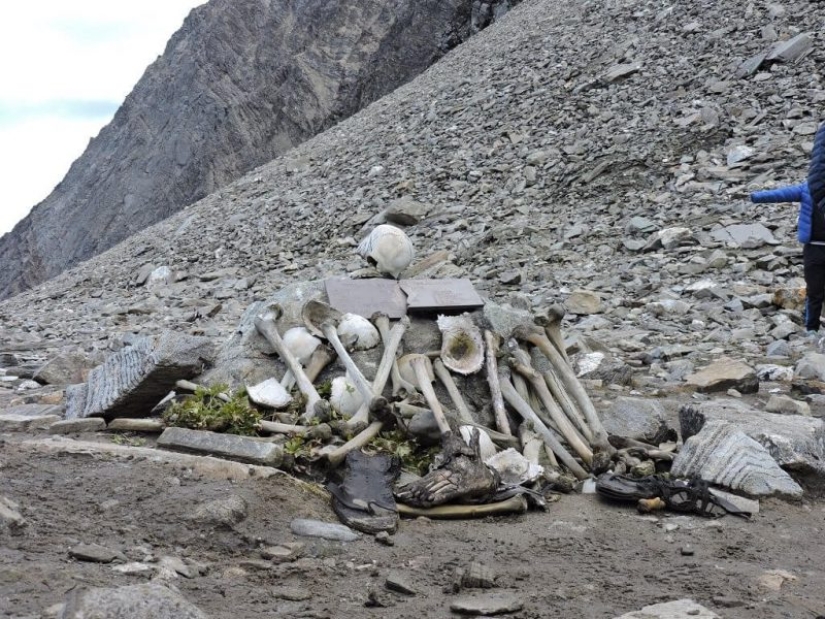
The inhabitants of the Himalayas are not at all shocked by human remains, but such an accumulation of them in one place caused the appearance of myths and legends. Most often, villagers told about a goddess named Nanda Devi, after whom the mountain and the national park are named. It was said that she killed people because they invaded her domain without asking permission and without showing proper respect.
On the slopes of Nanda Devi there is a temple of the goddess, near which a festival is organized once every 12 years. An important part of the holiday is the pilgrim — a mass procession along the slopes of the mountain. The route of the course is laid near Lake Roopkund, although it does not come close to it.
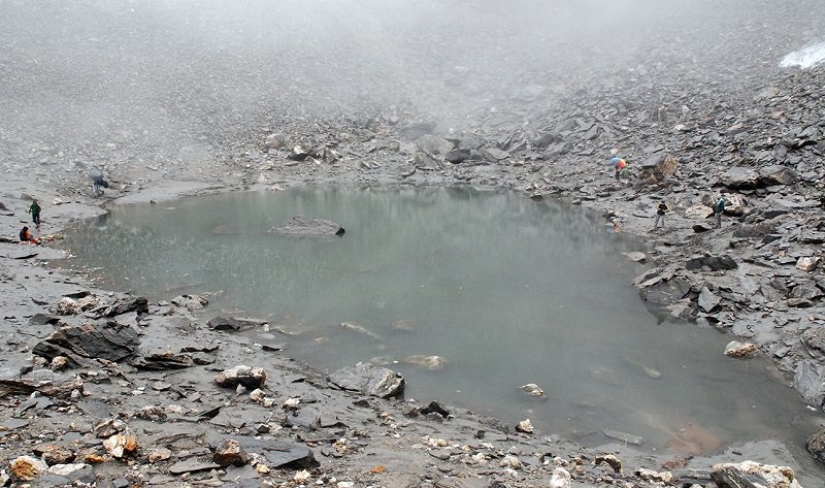
One of the legends of the festival is the story of the ancient king Jasdaval, who made a ritual hike along the slopes of the mountain with a large retinue. The monarch was followed by warriors, musicians, actors, dancers and even a pregnant wife. Due to the sudden onset of childbirth at the queen, the group had to spend the night near the lake.
Nanda Devi took the appearance of a noisy crowd and the birth of a baby as an insult and sent a blizzard and frost on the travelers, from which they all died. As it turned out later, this version had the right to life, but while it was 1942, which means World War II was in full swing.
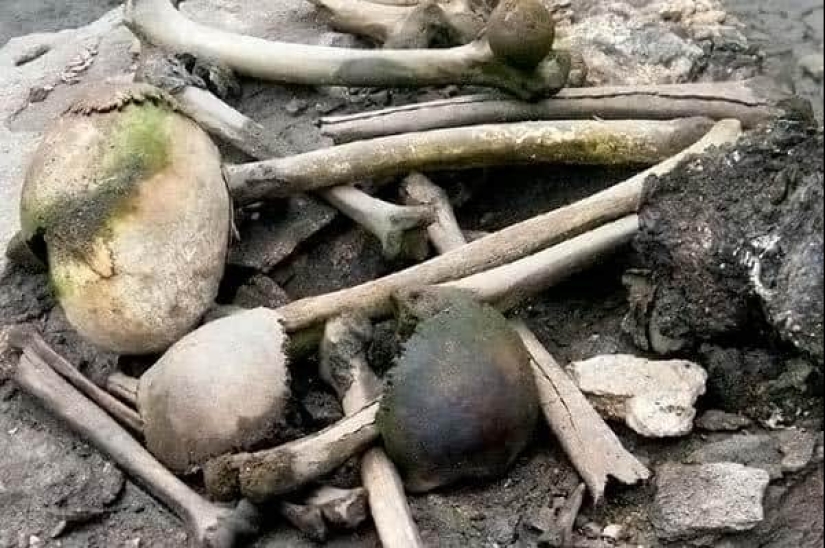
The very first version of the appearance of skeletons at the lake was a spy. Many believed that a group of Japanese saboteurs landed at Roopkund, who died by chance after landing due to bad weather. They refuted this theory only a couple of decades later, when they were able to establish that the bones are not one hundred years old.
But the exact age of the terrible finds could be determined only at the beginning of the XXI century, when appropriate technologies appeared. In 2004, a joint expedition of European and Indian scientists, sponsored by the National Geographic channel, went to the lake. Researchers found the remains of about 500 people near the lake, but, in addition, many artifacts were discovered that revealed some details of the ancient tragedy.
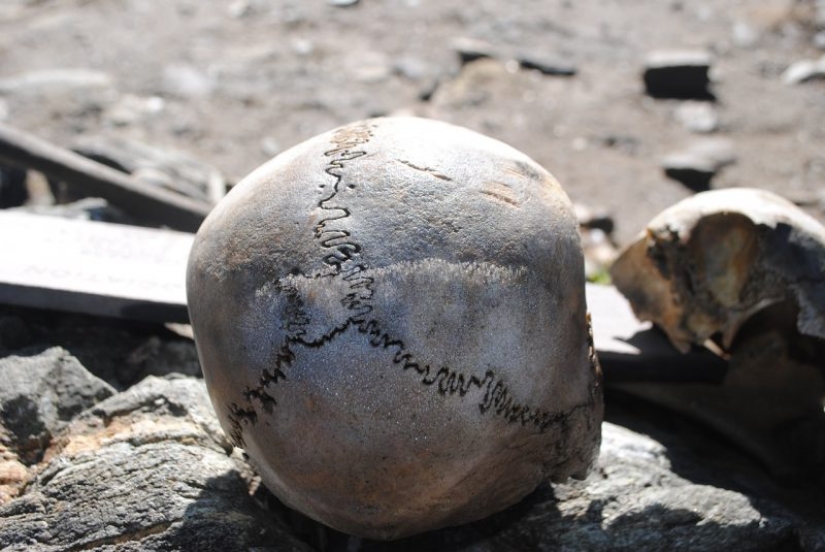
Due to the special microclimate of the highlands, flesh was preserved on some fragments of bodies, and elements of leather clothing and wooden and iron weapons were found next to the remains. Thirty of the best preserved corpses were described by scientists, packed and delivered to the laboratory for research.
An analysis of the findings was carried out at the Center for Cellular and Molecular Biology in Hyderabad, which showed that the people who died at the Skeleton Lake ended up there around 850 AD. It was determined that the group included people from two regions of the planet. 30% of the dead were local residents, and the rest came from territories now belonging to Iran.
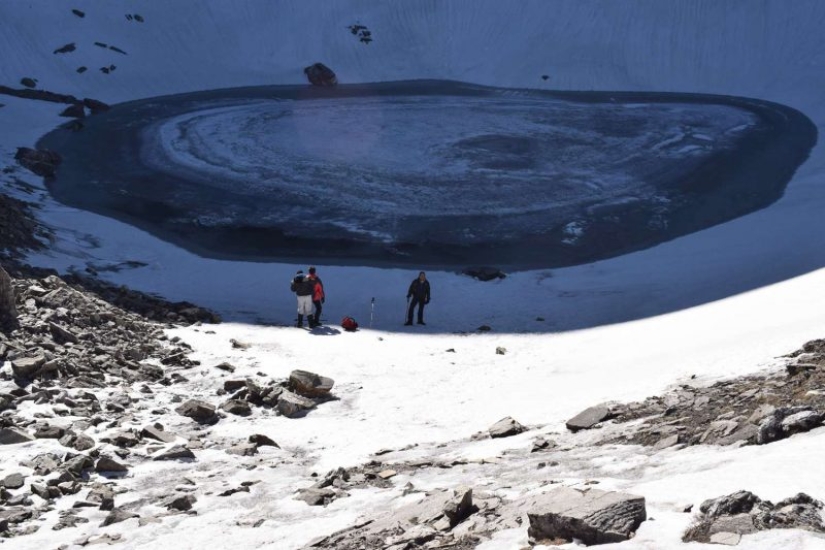
Until 2015, 82 skeletons were examined, which fully confirmed the Central Asian origin of most of the victims. Finally, the cause of death of the unfortunate was determined — all the people found near the lake had skull injuries. Many were sure that the travelers were killed by an avalanche or a rockfall, but Subhasha Valimbe, head of the Department of Anthropology at the University in Pune, refuted it.
All injuries on the skulls, collarbones and ribs of the victims were caused by spherical objects with a diameter of 8-9 cm. A combat skirmish? Not either. Everything is much simpler — 500 wanderers near a high-altitude lake were killed by hail. Of course, it was not an ordinary hail, but an abnormal one, even for this area, famous for its bad weather.
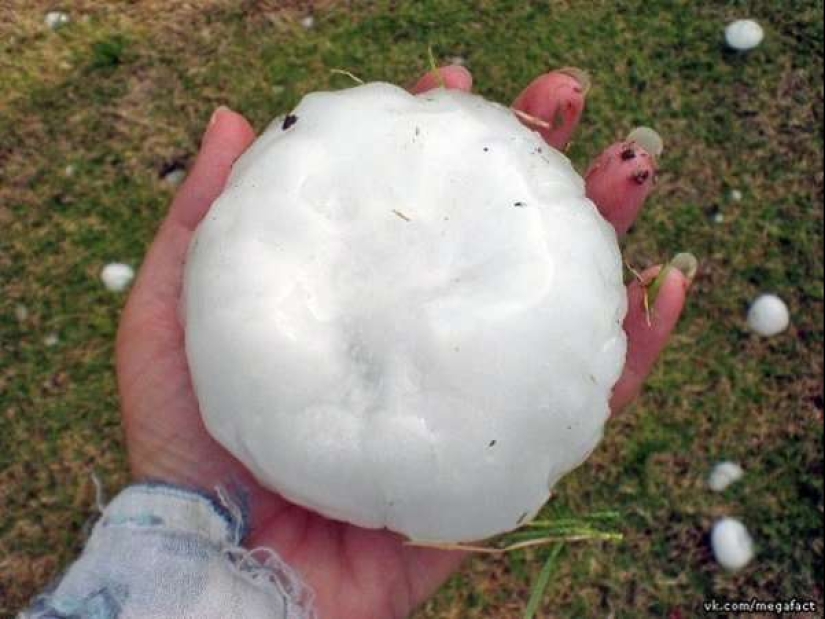
Such deadly precipitation sometimes falls, and it happens not only in the harsh highlands, but also in regions with a milder climate. Of recent cases, we can recall the hail that fell in 1986 in Bangladesh. Then hailstones the size of grapefruit killed 92 people. The most terrible example of such a natural cataclysm is considered to be the pieces of ice that fell from the sky in the Indian state of Uttar Pradesh in 1888, which took the lives of 230 people.
If everything was clear about ethnicity and the cause of death, then the purpose of the visit of a considerable group of people to a remote mountainous area, as before, remained a mystery. Most of the participants of the expedition were inclined to believe that these people were making a pilgrimage to the shrine of the goddess Nanda Devi.
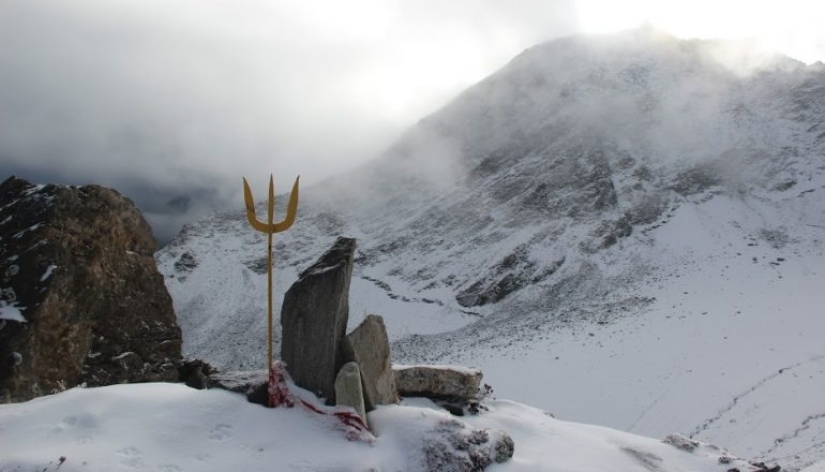
But the research that continued in 2017, which was joined by specialists from Harvard and the Max Planck Institute, crossed out the results of the first examinations. After conducting a detailed DNA analysis of 17 sets of remains, scientists divided them into three groups, which were conditionally named Roopkund_A, Roopkund_B and Roopkund_C.
Group A are those who died in the XIII—IX century, and it is not a fact that at the same time. They were people from the South Asian region. Group B quite unexpectedly threw up another riddle — the people who were part of it died at the beginning of the XIX century, that is, a thousand years after group A. The ethnic composition of this team confused the scientists even more — except for one person who was assigned to group C, they were all from Eastern Mediterranean.
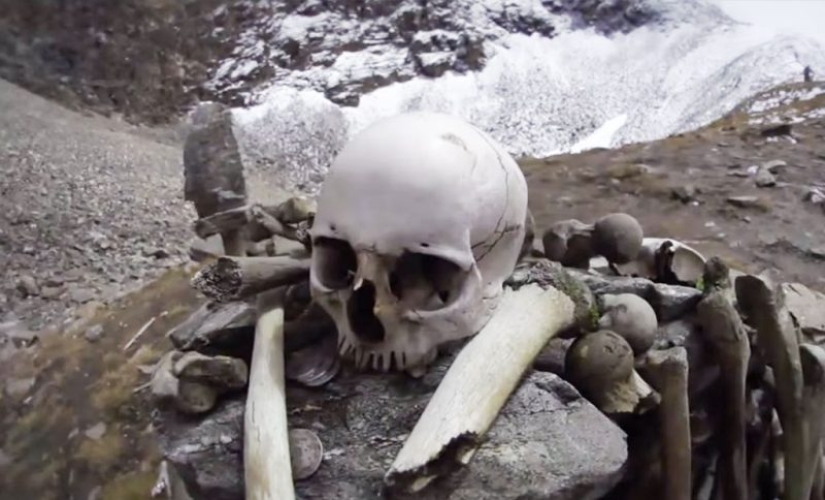
Travelers from Greece or the Middle East, most likely, moved in an unfamiliar mountainous area with a guide, who, according to the results of the examination, was if not local, then at least was born not so far from these edges.
It turns out that in the Middle Ages, a detachment of local residents died from a rare large hail near Lake Roopkund, and a thousand years later, Greeks, Arabs or Persians traveling with a guide died here for the same reason. If the first group were pilgrims, then, most likely, the second group were merchants from the Ottoman Empire, who for some reason climbed to a height of 5 kilometers.
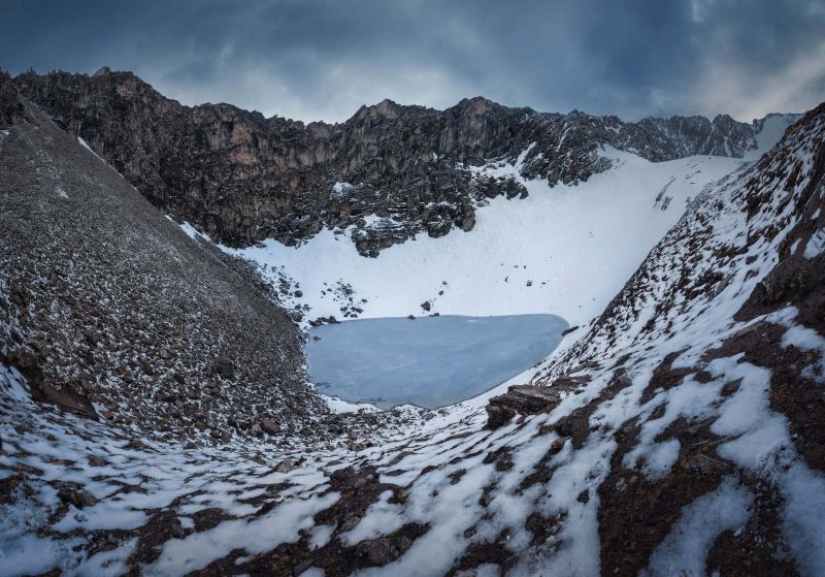
All this is quite real, except for the cause of death. It is hard to believe in a coincidence with a catastrophic deadly hail that kills travelers with an interval of a millennium. Summing up our story, we can say that the more perfect the methods of studying the remains from the Skeleton Lake become, the more incomprehensible the story of the mass death of people becomes. The work with the bone remains continues and, perhaps, soon we will be told some more strange facts related to Lake Roopkund.
Despite the bad reputation among the locals and the warnings of the administration of the Nanda Devi National Park, Lake Roopkund is a popular place for summer trekking. From the nearest tourist camp it can be reached in 3-4 days, weather permitting.
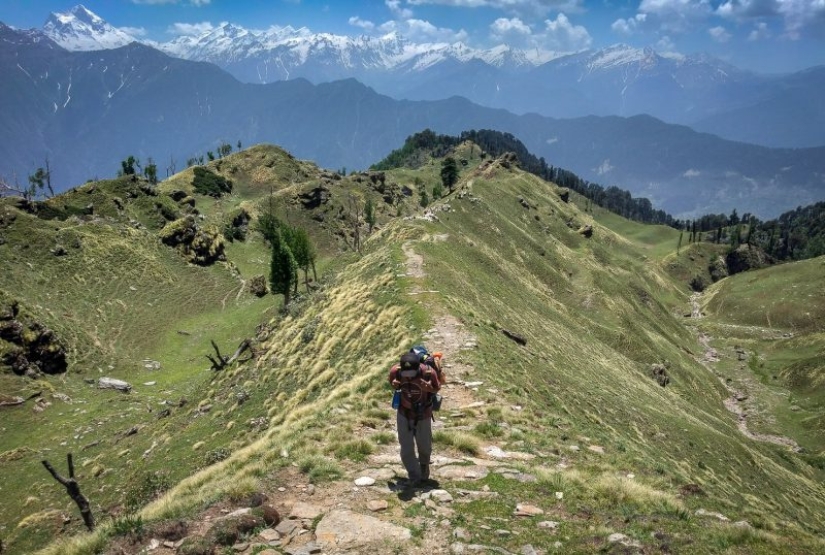
There are many people who want to see the incredible beauty of the Himalayan landscapes, and even more tourists want to touch the mystery of Skeleton Lake and unravel its secrets on their own.
Recent articles

Treasures are all associated with pirates, robbers and the affairs of bygone days. You will be surprised, but countless treasures ...

Professional street photographer Eric Kim teaches his craft in workshops around the world. Next, you will find some tips from a ...

An Englishman, a German and a Russian meet... No, this is not the beginning of another joke, but a rough description of a video ...